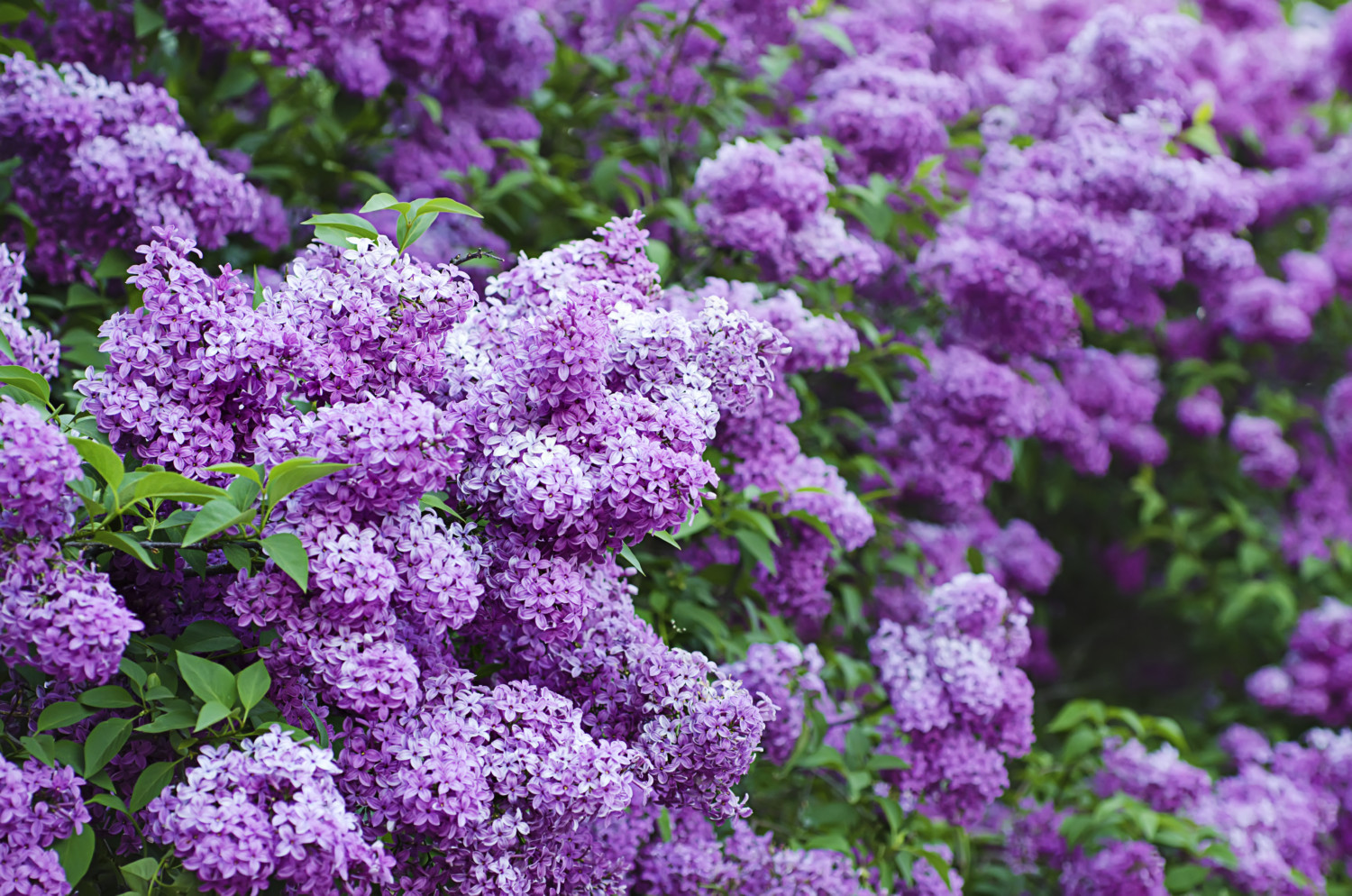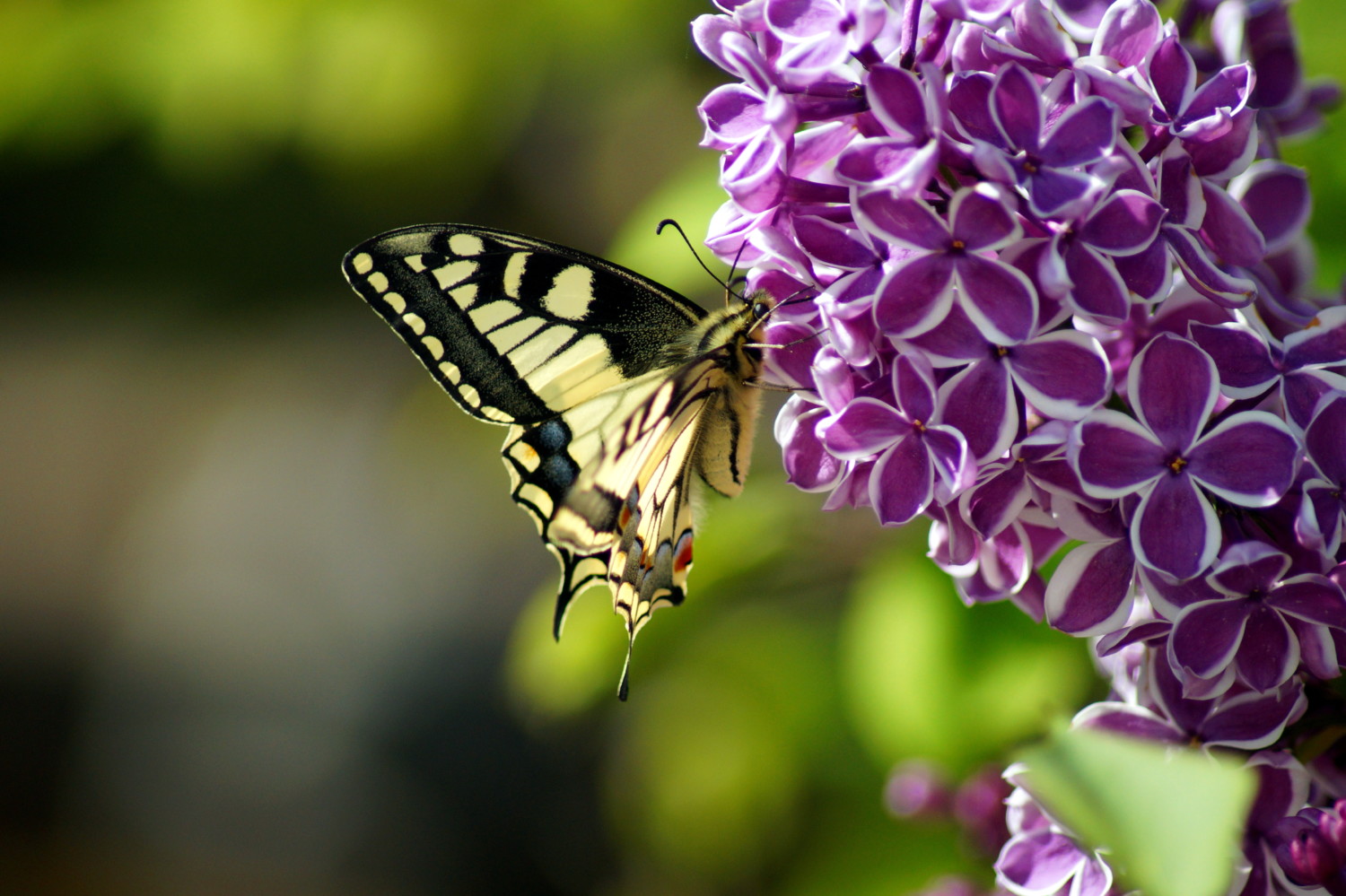Lilac bushes are not only fragrant, but they also add interest and color to any landscape, re-blooming year after year. Known as some of the hardiest shrubs around, lilacs are low-maintenance and grow well in USDA plant hardiness zones 2, 3, 4, 5, 6 and 7. They prefer soil with a neutral pH and require ample sunlight. (If you’re not sure what zone you’re in, check here.) Cold winters send lilacs into dormancy, which promotes spring blossoms.
If you’re looking to add scent to your garden, lilacs are a surefire bet. Purple Chinese lilacs are considered to be the most fragrant. Blooms typically appear in the spring for two weeks and consist of several branching clusters or panicles. With more than 1,000 lilac varieties, there are plenty of types to choose from. These plants are members of the Oleaceae family of shrubs and trees, which includes species like olives and jasmine. While thoughts of lavender colored lilacs may be the first thing that comes to mind, flowers come in various colors, such as pink, yellow, blue, purple and white.

How To Plant a Lilac Bush
The ideal time to plant a lilac bush is the early fall, before the first freeze. Look for a full-sun spot (at least six hours of direct sun per day) in your yard that’s not right against the house. This shrub likes to breathe and doesn’t do well when butted up against a hard surface. Lilacs make for colorful property borders when planted in rows.
Dig a hole that’s twice as large as the root ball. Since this plant likes good drainage, there’s no need to add any potting soil or additives. Once you place your root ball, backfill it with soil and gently pat the dirt to keep the bush upright.
How To Care for Lilacs
Luckily, lilacs don’t need to be pruned much, if at all. If you do want to trim an area due to damage or an overgrown branch, it’s best to prune in the spring just after the blooming cycle. This is because flower buds form in the summer for the following spring’s blooms.

Young plants like to be watered regularly. Regardless of age, be sure to water well throughout the hot summer months, just don’t drench the plants. Mature varieties can survive when watered only during droughts. Be sure to fertilize in the early spring and repeat after the bloom cycle.
Even though lilac bushes last for several decades, with some living 75 years or more, it usually takes a few years for lilac bushes to bloom at first. Keep in mind that some lilac bushes can grow to be 10 feet tall! Certain types, such as Boomerang lilacs, rebloom regularly.
How To Transplant a Lilac Bush
You can grow dwarf varieties in a pot, but after three to five years, it’ll probably need to be transplanted into the ground so it has room to grow. If you have one that’s in the ground and needs to be relocated to allow for more breathing room, wait until after it flowers before relocating.

Once your lilacs are in full bloom, try snipping a few to create lilac lemonade. Clip flowers to create fragrant arrangements inside your home. To make the most out of your cuts, change the water every few days.
This story originally appeared on Simplemost. Check out Simplemost for additional stories.


